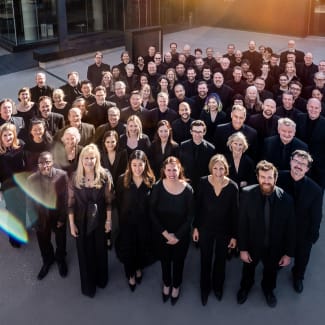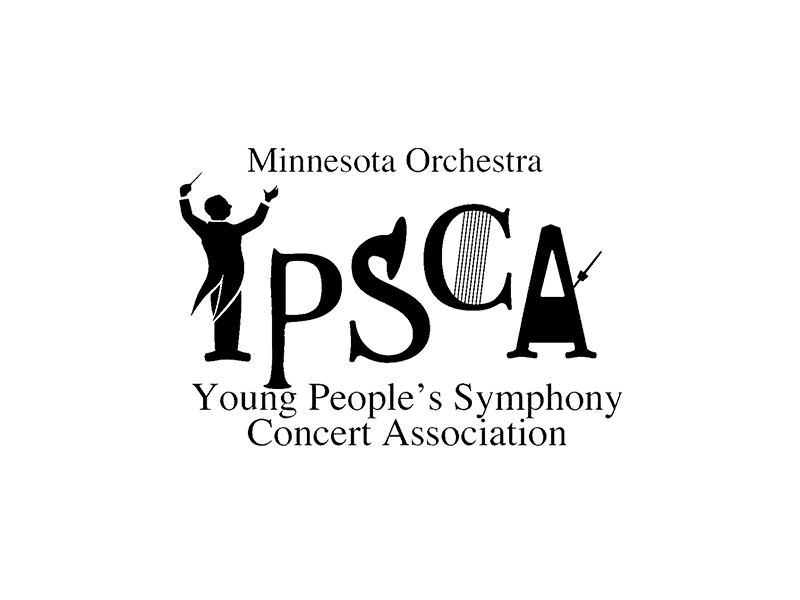
CONCERT ACTIVITIES
Students Center Stage
Music teachers inspire their students every single day. The young musicians involved in this program are living proof of all the good that music teachers foster in the lives of their students and the Minnesota Orchestra is honored to share the stage with them. This exciting program features the 2022 and 2023 Young People’s Symphony Concert Association (YPSCA) Concerto competition winners.
Guide to the Orchestra
See instruments in action, as demonstrated by Minnesota Orchestra musicians.
Concert Program
Mendelssohn - Overture to A Midsummer Night’s Dream
Korngold - Moderato nobile, from Violin Concerto
Mozart - Overture to The Magic Flute
Martinů - Poco allegro, from Oboe Concerto
Coleridge-Taylor - Largo – Maestoso, from Sussex Landscape
Soneral - Muggle's March
About the Composers
Felix Mendelssohn (1809-1847) was a German composer, organist, pianist, and conductor. One of the most well-known composers of the Romantic period, Mendelssohn’s compositions include works for piano, organ, symphonic orchestra, concertos, chamber music, and opera.
During the summer of 1826, the 17-year-old composer wrote an overture to Shakespeare’s beloved play that remains today the finest music ever inspired by Shakespeare. Years later, in 1843, King Friedrich Wilhelm IV of Prussia asked Mendelssohn to write incidental music for a production of the same play to be given in Potsdam that fall. Mendelssohn, now 34, reached back across the span of 17 years to recapture the magic he had created as a teenager and wrote a suite of 12 more numbers to accompany the play. In the Overture, young Mendelssohn captured the spirit of Shakespeare’s play perfectly. The instant the music begins, we are transported to the woods outside Athens, where Puck flits mischievously through the forest, the “rude mechanicals” rehearse their play and lovers are mysteriously transformed.
Erich Wolfgang Korngold (1897-1957) was making formidable waves as he entered his teens. Composers including Gustav Mahler, Richard Strauss and Giacomo Puccini, saluted him as a Mozart-sized genius. He played the piano well by the time he was five and was composing large-scale works at ten, performed by ensembles such as the Austrian Imperial Ballet. Korngold’s success continued into his 20s, and a 1932 poll by a Vienna newspaper determined that he was one of the two greatest living composers. His music came to be heard by uncounted millions. In 1934 the producer and director Max Reinhardt invited him to Hollywood to score his film version of A Midsummer Night’s Dream. He was immediately asked to stay on and write the music for Captain Blood, the film that made Erroll Flynn a star. In 1938, when Austria was annexed by the Nazi regime, he moved his family, including his parents and brother, to Hollywood.
After the war, Korngold came back to composing for the concert hall—and the Violin Concerto marked his return. At the urging of the great Polish violinist Bronislaw Hubermanm, Korngold composed the concerto in the summer of 1945, drawing on material from his film scores. The concerto was first performed on February 15, 1947, by Jascha Heifetz with Vladimir Golschmann and the St. Louis Symphony. In the first movement, moderato nobile, the solo violin is immediately present, and with a glorious, eloquent theme that rises through almost two octaves in just five notes. After a transition of quicker music, a new theme arrives, no less lyric than the first, and beautifully supported in the orchestra.
Wolfgang Amadeus Mozart (1756-1791) was one of the most influential composers of the classical era and remains one of the most prolific composers in history. Despite his short life, Mozart composed more than 800 works of many genres including chamber music, opera, choral repertoire, and pieces for symphonic orchestra. Born in Salzburg, Mozart began his musical journey as a keyboard player and violinist. A musical prodigy, Mozart began composing at age five, touring Europe and made several trips to Italy to perform his music.
The Magic Flute remains among the most delightful stage works of all time, balancing fantastical, comical and somber elements as the musical love story unfolds. Mozart himself conducted its first
performance on September 30, 1791, at Schikaneder’s theater, and it was a triumph. In the following month it was presented two dozen times, and during the next two years there were more than 200 performances. Alternating throughout the overture we hear the contrast between the solemnity and reverence of the opening and the bright, exuberant, cheerful world of common ordinary people.
Bohuslav Martinů (1890-1959) was a Czech composer of modern classical music and violinist, having played in the Czech Philharmonic Orchestra. In 1923, Martinů left Czechoslovakia for Paris and experimented with writing music using modern French style. Martinů belonged to a generation of artists confronted with the prospect of fleeing Europe in order to escape Nazi terror. In 1940 he left Paris in advance of the German invasion, going first to Portugal before settling in the United States. It was here that he wrote his first of six symphonies, conducting its premiere with the Boston Symphony Orchestra. At the end of the second world war, Martinů returned to Europe, retreating to Swizerland before subsequently returning to France where he remained until his death.
A prolific composer of more than 400 works, Martinů wrote several chamber and consorted works that included woodwinds but only one solo wind concerto, his Concerto for Oboe and Small Orchestra. The concerto, often described as “bright and sunny” was written during his time in Nice, France, where Martinů stated that he felt as if he were living in paradise. The piece premiered in Sydney, Australia in August of 1956 by the Sydney Symphony Orchestra before being performed for the Austrian Radio by the Vienna Symphony Orchestra.
The third movement, poco allegro, is known for its polka-like rhythms and its elements of folk dance music. The flourish that opens the oboe soloist’s entry hints at the virtuosity of the solo part from the very beginning of the movement. With syncopated phrases, unmatched energy, and daring twists and turns, this third and final movement serves as the perfect conclusion to a vivacious concerto.
Gwendolen Avril Coleridge-Taylor (1903-1998), known simply as Avril Coleridge-Taylor professionally, was born in South Norwood, London and was the daughter of composer Samuel Coleridge-Taylor. She wrote her first composition, “Goodbye Butterfly” at age 12 and later secured a scholarship for composition and piano performance at Trinity College of Music in 1915. She made her formal conducting debut at the Royal Alberg Hall in London and was the first female conductor of the Royal Marines. She also served as a frequent guest conductor of the BBC Orchestra and the London Symphony.
In 1952, Coleridge-Taylor was invited on a tour to South Africa, during the apartheid, where she experienced the limiting prejudice of the apartheid policy. When she arrived, she was taken as white, as most of her ancestry was white-European. When the South African government learned that her father was not white (her paternal grandfather was from Sierra Leone), they denied her work as a conductor and composer. After this experience, she composed her Ceremonial March, celebrating the independence of Ghana.
Coleridge-Taylor moved to East Sussex in southeast England in 1939 where she lived on the Sussex Coast until her death in 1998. During her time in East Sussex, she composed several works inspired by the landscape, including Sussex Landscape.
Luke Soneral (b. 2008) is a ninth-grade student at Minnetonka High School and a music composition major at the Juilliard School Pre-College in New York City. Luke studies composition with Dr. Eric Ewazen (Juilliard) and formerly with Drs. Andrew Martin Smith and Amanda Harberg (Interlochen Center for the Arts). A small ensemble winner of the 2022 National Young Composer's Challenge, his woodwind quintet, Melting Icicles premiered at the Dr. Philips Center for the Performing Arts in Orlando, FL. At home in Minnesota, the Minnesota Sinfonia premiered Luke’s work, Nocturne in C minor, as the winning composition for the 2022 Minnesota Sinfonia Young Composer Competition.
A 2022-2023 summer composition student at Interlochen Center for the Arts, Luke composed and performed a variety of choral and chamber ensemble works for piano, strings, and woodwinds. Luke is honored to share Muggle’s March with audiences at the Young People’s Concert of the Minnesota Orchestra. An avid pianist and bassist, Luke is a current student of Dr. Mika Sasaki of the Juilliard School and Robert Anderson of the Minnesota Orchestra. Luke plays bass with the Symphony Orchestra of the Greater Twin Cities Youth Symphonies. Outside of the arts, Luke enjoys playing basketball, tossing the football, reading, playing Scrabble, and spending time with friends and family.

TEACHER ACTIVITIES FOR STUDENTS CENTER STAGE
Explore our concert guide designed for use in the classroom—including activities, flashcards, and more.
Artists

The Grammy Award-winning Minnesota Orchestra, now in its second century, ranks among America’s top symphonic ensembles, with a distinguished history of acclaimed performances in its home state and around the world; award-winning recordings, broadcasts and educational engagement programs; and a commitment to intentionally build concert programs to feature more works by composers of color, exploring music both contemporary and historic. This past fall, Danish conductor Thomas Søndergård began his tenure as music director.

Violinist Esme Arias-Kim is currently studying at the Colburn Music Academy as a Kohl Scholar with Robert Lipsett. She previously studied with Almita Vamos and Betty Haag-Kuhnke. Most recently she received Silver Medal at the 2023 Stulberg International String Competition and Gold Medal at the Vancouver Symphony Orchestra’s 29th Annual Young Artist Competition and will solo with the Vancouver Symphony this winter.

Eighteen-year-old oboist Izaiah Cheeran is a passionate performer who focuses on elevating the music of composers from historically marginalized peoples. He is currently a pupil of Katherine Needleman and Philippe Tondre at the Curtis Institute of Music in Philadelphia, which he entered in 2022.
Sponsored By
Mary Ann Feldman Music Education Fund
CORPORATE & INSTITUTIONAL SPONSORS





